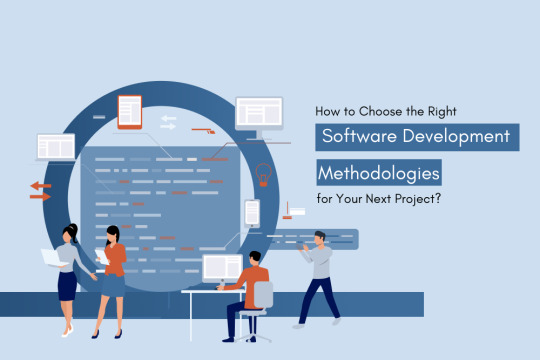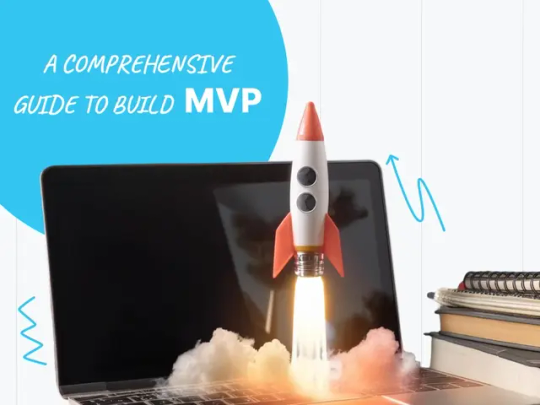#IterativeDevelopment
Explore tagged Tumblr posts
Text
#IterativeDevelopment#AgileDevelopment#SoftwareLifecycle#ProductDevelopment#TechInnovation#DevProcess#SoftwareEngineering#AgileMethodology#SoftwareProjectManagement#CustomSoftwareDevelopment
0 notes
Text
Agile project management has been a key factor in Nvidia’s ability to remain an industry leader in the rapidly changing world of technology. By embracing the principles of flexibility, collaboration, and iterative development, Nvidia is able to accelerate innovation and adapt to market demands more efficiently than many of its competitors. The company’s commitment to Agile enables it to deliver high-quality products faster, respond to customer feedback, and push the boundaries of what is possible in AI, gaming, and computing.
For technology companies, Nvidia’s success with Agile provides valuable insights into how to manage complex projects and navigate the challenges of a fast-paced, dynamic industry. The ability to iterate, adapt, and collaborate effectively is critical for staying competitive and driving continuous innovation in today’s tech-driven world.
#AgileProjectManagement#Innovation#Nvidia#Technology#AI#GPUDevelopment#MachineLearning#AgileMethodology#TechIndustry#ProjectManagement#IterativeDevelopment#ContinuousIntegration#CrossFunctionalTeams#AIResearch#ProductDevelopment
0 notes
Text
How to Choose the Right Software Development Methodologies for Your Next Project?
Software development methodologies are vital for managing the challenges of software development, such as changing requirements and deadlines. Various methodologies, including Agile, Scrum and Spiral, are available, but selecting the right one is crucial as not all are suitable for every type of software. By choosing a suitable methodology and adhering to it, developers can ensure efficient work, effective communication and proper documentation, resulting in the timely delivery of high-quality software.

What are software development methodologies?
Software development methodologies consist of a series of processes and procedures implemented during the software development lifecycle, with the aim of benefiting both the development team and the clients.
An in-depth look at software development methodologies
To deliver high-quality products, custom software development companies leverage various methodologies such as Agile, Spiral, Scrum, Extreme Programming, Rational Unified Process and Big Bang.
Agile methodology
Agile methodology is an iterative approach to software development that prioritizes continuous planning, communication and collaboration between teams and clients. Other frameworks like Scaled Agile Framework (SAFe), Large-Scale Scrum (LeSS) and Scrum of Scrums (SoS) can customize Agile practices to meet the needs of a specific organization or project.
Phases
The software development process typically consists of several key phases:
Concept Phase
Inception Phase
Iteration Phase
Quality Assurance
Software Release
Scrum methodology
The Scrum methodology follows an iterative development approach, where team members break down large tasks into smaller ones and work on them using sprints. This incremental approach accelerates development and adds value to complex projects. Moreover, the Scrum framework enables developers to incorporate conventional system development methodologies with flexible Agile practices.
Phases
The Scrum process involves several phases:
Product Backlog
Sprint Backlog
Daily Scrum Meeting
Product Increment
DevOps
DevOps, a term that gained popularity in the IT industry between 2007 and 2008, refers to a set of advanced tools, practices and process automation philosophies that combine IT operations with software development. By providing a framework for building, testing and releasing software rapidly. DevOps ensures improved outcomes and enables the continuous delivery of products.
Phases
The DevOps process involves several phases:
Continuous Integration
Continuous Testing
Continuous Development
Continuous Deployment
Continuous Monitoring
Waterfall Model
Winston Royce introduced the Waterfall Model in 1970 through his research paper. This sequential and linear approach emphasizes the systematic progression of steps in the development process. In the Waterfall Model, each stage must be fully completed before the next phase can begin.
Phases
The software development process typically includes the following phases:
Requirements analysis
Design
Implementation
Unit testing
Integration and system testing
Operation and maintenance
Iterative
The iterative or incremental development model breaks the entire software development process into smaller segments, enabling teams to gradually improve the evolving versions until the entire system is ready. This model helps identify issues and make necessary improvements within a limited budget in the initial stages of the software development life cycle.
Phases
The Iterative process includes the following phases:
Planning
Analysis
Implementation
Evaluation
Spiral Model
A spiral model is a hybrid approach that blends iterative and waterfall models. It is risk-driven, with each phase beginning with a predetermined goal and ending with a client review. The development team adds new features in a continuous spiral, increasing in scope with each iteration until deployment.
Phases
The spiral model typically includes the following phases:
Planning
Risk Analysis
Engineering
Evaluation
V Model
The V Model is a commonly used software development methodology that incorporates testing at each stage of the project, allowing for the timely completion of the project. However, each step must be completed before moving to the next, ensuring that the project stays on track and on target.
Phases
The V Model includes the following phases:
Unit Testing
Integration Testing
System Testing
User Acceptance Testing
Big Bang
The Big Bang model is a simplistic approach to software development that is suitable for small projects but may lead to quality issues in larger projects due to the absence of in-depth planning and testing. Additionally, changes in requirements can cause significant delays, making it difficult to manage the project as a whole.
**Unlike other SDLC models, the Big Bang model doesn’t have specific phases.**
Feature-Driven Development (FDD) Model
Feature-driven development (FDD) is a software model created in 1997 by Jeff De Luca and Peter Coad for a Singaporean bank project. They built it in 15 months with 50 professionals. The FDD team comprises a project manager, chief programmer, chief architect, development manager, class owner and domain expert. In the first phase, an overall model of the system is created to provide a high-level view of the features to be developed.
Phases
The Feature-Driven Development (FDD) Model includes the following phases:
Build a Feature List
Plan by Feature
Design by Feature
Build by Feature
Test by Feature
Integrate Features
Launch the System
Prototype Methodology
The prototype methodology involves creating an initial version of the software system that may have limited functionality, reliability and efficiency compared to the final product. However, it is a valuable tool as it allows the client to visualize and better understand the expected outcome of the final software product, which may not have been clear in the initial stages of the project.
Phases
The Prototype Methodology includes the following phases:
Requirement collection and analysis
Faster design
Create a prototype
Initial user evaluation
Redefining prototype
Implementation of product
Timely maintenance
Rapid Application Development Methodology
The Rapid Application Development (RAD) methodology emphasizes quick customer feedback and rapid prototyping over prolonged development and testing cycles. This approach enables developers to make frequent iterations and updates to software efficiently, without starting from scratch each time. Moreover, RAD ensures that the outcome is high-quality and meets the end user’s requirements.
Phases
The Prototype Methodology includes the following phases:
Goal Planning
Prototype Design
Rapid Development
Production
Lean Development
The primary objective of the lean software development methodology is to minimize waste, improve efficiency and deliver the necessary features for the product. This approach involves releasing an initial software version developed by software engineers.
Principles
Here are some fundamental principles and practices often associated with lean development:
Define value from the customer’s perspective.
Map the value stream and identify waste.
Create flow by eliminating waste and optimizing the value stream.
Establish pull by letting customer demand drive development.
Pursue perfection by continuously improving the process.
Summary
Choosing the right software development methodology for your project is crucial and depends on various factors such as project scope, budget, resources, and time frame. It’s essential to analyze the pros and cons of each methodology and consider the necessary tools and expertise required. Our experts can assist you in selecting the best methodology for your enterprise.
0 notes
Text
Introduction to Agile Project Management

Agile Project Management is a dynamic approach to managing projects that emphasises flexibility, collaboration, and customer satisfaction. Unlike traditional project management, Agile focuses on iterative development, allowing teams to adapt quickly to changes and deliver value incrementally. By promoting continuous improvement and open communication, Agile helps teams manage complex projects more efficiently. It's a methodology that fosters a proactive mindset, enabling project managers to anticipate and respond to challenges effectively. Discover the principles and practices of Agile with London School of Emerging Technology (LSET) Agile Project Management Course. This course will equip you with the skills to lead successful, adaptive projects in today's fast-paced environment.
Enrol @ https://lset.uk/ for admission.
0 notes
Text
Agile Evolution: Adapting Sprint Management for Changing Needs
In the fast-paced world of project management, the evolution of agile methodologies has become imperative to keep pace with changing needs and dynamic environments. One such evolution is the adaptation of sprint management, a key component of agile frameworks, to suit the ever-changing demands of modern projects. In this blog post, we will explore the concept of agile evolution and dive into how organizations can effectively adapt sprint management to meet their evolving needs.
Understanding Agile Evolution
Agile methodologies originated from the software development industry, emphasizing iterative development, collaboration, and flexibility. Over time, agile principles have transcended their original domain and found application in various industries, including marketing, finance, and manufacturing. This evolution reflects the need for organizations to respond quickly to market changes, customer feedback, and technological advancements.
The Role of Sprint Management
At the heart of agile methodologies lies sprint management, a framework for breaking down projects into manageable chunks called sprints or iterations. Each sprint typically lasts two to four weeks and involves planning, execution, review, and adaptation. Sprint management promotes transparency, collaboration, and continuous improvement, enabling teams to deliver value incrementally and respond to changes effectively.
Challenges in Adapting Sprint Management
While sprint management offers numerous benefits, adapting it to changing needs poses several challenges. These challenges include:
Scope Creep: Changes in project scope during sprints can disrupt timelines and priorities.
Resource Constraints: Limited resources may hinder the ability to adapt quickly to evolving requirements.
Communication Breakdowns: Inadequate communication among team members can lead to misunderstandings and delays.
Resistance to Change: Resistance from team members or stakeholders may impede the adoption of new practices.
Strategies for Adapting Sprint Management
To overcome these challenges and successfully adapt sprint management for changing needs, organizations can implement the following strategies:
Prioritize Flexibility: Embrace change as a core principle of agile methodologies. Encourage teams to remain flexible and responsive to evolving requirements.
Effective Planning: Determine precise objectives, outputs, and standards for evaluation in each sprint.Define clear objectives, deliverables, and success criteria for each sprint.
Regular Communication: Foster open and transparent communication among team members, stakeholders, and customers. Regularly review progress, solicit feedback, and address concerns promptly.
Empowerment and Accountability: Empower team members to take ownership of their work and make decisions autonomously. Establish accountability mechanisms to ensure that commitments are met.
Continuous Improvement: Embrace a culture of continuous improvement by regularly reflecting on processes, identifying areas for enhancement, and implementing changes iteratively.
Conclusion
In conclusion, agile evolution is essential for organizations seeking to thrive in today’s dynamic business landscape. By adapting sprint management for changing needs, organizations can enhance their agility, responsiveness, and ability to deliver value to customers. By prioritizing flexibility, effective planning, communication, empowerment, and continuous improvement, organizations can overcome challenges and unlock the full potential of agile methodologies.
As the pace of change continues to accelerate, embracing agile evolution becomes not just a competitive advantage, but a necessity for survival in the ever-evolving marketplace.
#artificial intelligence#projectmanagement#marketing#SprintManagement#AgileWorkflow#ProjectManagement#Scrum#TeamProductivity#AgileMethodology#ProductDevelopment#TimeManagement#TaskPrioritization#CollaborativeTeams#AgileLeadership#TaskManagement#TeamCoordination#IterativeDevelopment#ContinuousImprovement#AgileProcesses#ProjectPlanning#TeamEmpowerment#SprintPlanning
0 notes
Text
A COMPREHENSIVE GUIDE TO BUILD MVP
Discover the essence of a Minimum Viable Product (MVP) – a foundational version of your product designed to swiftly address core audience needs. Dive into its benefits, including risk mitigation and efficient resource allocation, and learn how to navigate MVP development with expert insights. Explore key steps, technology considerations, and tips to target the right market, alongside notable MVP success stories. Embrace the MVP approach and accelerate your journey to product validation and success

#MVP#ProductDevelopment#StartupSuccess#LeanStartup#TechStack#MarketValidation#Innovation#AgileDevelopment#Entrepreneurship#TechInnovation#BusinessStrategy#ProductLaunch#MarketResearch#UserFeedback#TechTrends#StartupTips#DigitalTransformation#IterativeDevelopment#TechSolutions#SuccessStories#BusinessGrowth
0 notes
Text

4 tips to build your own website as web devloper Defineddigital
#WebDevelopmentTips#WebsiteBuilding#WebDevAdvice#CodingTips#HTMLCSSJS#WebHosting#UXDesign#WebsitePerformance#IterativeDevelopment#AskBabaWebDev#defineddigital#seo#domainname#responsivewebsite
0 notes
Text
"Adapt, Evolve, Deliver: Agile Methodology Market 2025–2033 🔄✨"
Agile Methodology Market is transforming how organizations approach project management and software development. By offering frameworks, tools, and services that prioritize collaboration, flexibility, and efficiency, this market supports businesses in navigating dynamic environments and achieving faster time-to-market for their offerings.
To Request Sample Report: https://www.globalinsightservices.com/request-sample/?id=GIS32153 &utm_source=SnehaPatil&utm_medium=Article
The market is experiencing robust growth, fueled by widespread adoption across industries seeking to enhance agility. The software development segment leads the market, capturing 45% of the share in 2023, driven by the demand for iterative and rapid application delivery processes. Project management tools follow at 30%, while consulting services hold 25%, reflecting the increasing need for expert guidance and agile training.
Regionally, North America dominates, supported by advanced technology ecosystems and a strong network of agile service providers. Europe ranks second, propelled by digital transformation initiatives and compliance requirements. The United States and Germany are pivotal contributors, with their innovative tech industries and strong demand for agile solutions.
Key players such as Atlassian, Microsoft, and Scrum Alliance are shaping the competitive landscape. Atlassian is enhancing its product portfolio by integrating AI capabilities, while Microsoft continues to expand its Agile tools suite. These advancements, combined with strategic partnerships, are driving market consolidation.
The Agile Methodology Market’s future is promising, with a projected 15% CAGR by 2033. The growing emphasis on customer-centric approaches and the integration of AI and automation are key drivers of innovation. However, challenges such as compliance with data protection regulations remain, necessitating strategic investments in secure and efficient solutions.
This market is a cornerstone of digital transformation, offering immense opportunities for businesses to thrive in an increasingly competitive landscape
#AgileMethodology #AgileMarket #ProjectManagement #SoftwareDevelopment #DigitalTransformation #AgileTools #IterativeDevelopment #CloudAgility #CustomerCentricity #TechInnovation #Scrum #Kanban #ContinuousIntegration #AIinAgile #BusinessAgility
0 notes
Text
Explaining Agile for Executives
Agile is a collaborative, iterative methodology commonly used in software development but can be applied to other areas. It values individuals, working software, customer collaboration, and responding to change. Agile can lead to faster delivery, customer satisfaction, and flexibility, but requires a cultural shift and changes to existing processes. #agilemethodology #agileapproach #iterativedevelopment #collaboration #adaptability #fasterdelivery #customersatisfaction #flexibility #leadership #executives #software #softwaredevelopment #change #agile #changemanagement #culturalshift #teamwork #sprints #valuedelivery #productdevelopment #businessagility #agileleadership #scaledagileframework #blog #blogpost
Click on the link below to read the blog:
0 notes
Text
#IterativeDevelopment#AgileDevelopment#SoftwareDevelopment#ProductDevelopment#TechInnovation#AgileProcess#MVPStrategy#DigitalProductDesign#SoftwareEngineering#UserDrivenDevelopment
0 notes
Text
In product development, businesses need to balance speed, quality, and innovation. The Agile methodology, combined with the concept of the Minimum Viable Product (MVP), offers a powerful framework for achieving this balance. By focusing on creating a product with just enough features to address core customer needs, teams can test ideas, gather feedback, and iterate quickly. Let’s dive into what Agile MVP means and how it can drive success in your projects.
#AgileMVP#ProductDevelopment#LeanStartup#AgileMethodology#Innovation#MinimumViableProduct#UserFeedback#IterativeDevelopment#ProductManagement#AgilePrinciples#StartupSuccess#ContinuousImprovement#BusinessGrowth#CustomerCentricity#RapidPrototyping
0 notes
Text
In project management, two prominent methodologies often dominate the discussion: Agile and Waterfall. These approaches offer distinct philosophies and methods for handling projects, especially in software development and other technical fields. Understanding their differences can help organizations choose the right approach based on their project needs. Below, we explore the core differences between Agile and Waterfall, focusing on their characteristics, advantages, and typical use cases.
#AgileVsWaterfall#ProjectManagement#AgileMethodology#WaterfallModel#SoftwareDevelopment#Scrum#ProjectPlanning#IterativeDevelopment#TraditionalApproach#TechTrends
0 notes
Text
Agile has revolutionized the way teams develop software and manage projects, offering a flexible, iterative approach that prioritizes customer collaboration, adaptability, and rapid delivery. Whether you’re new to Agile or need a refresher, this Agile cheat sheet breaks down the core concepts, principles, and tools that can help you master the framework and apply it to your projects.
#Agile#Scrum#Kanban#ProjectManagement#AgilePrinciples#Sprints#UserStories#ProductBacklog#AgileTeams#ContinuousImprovement#BurndownChart#AgileFrameworks#Collaboration#IterativeDevelopment#SprintPlanning#DailyStandup#AgileWorkflow#SoftwareDevelopment#AgileManifesto#TeamProductivity
0 notes